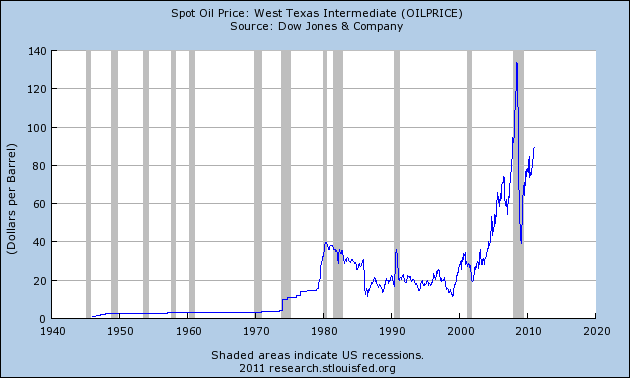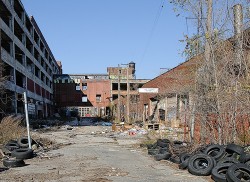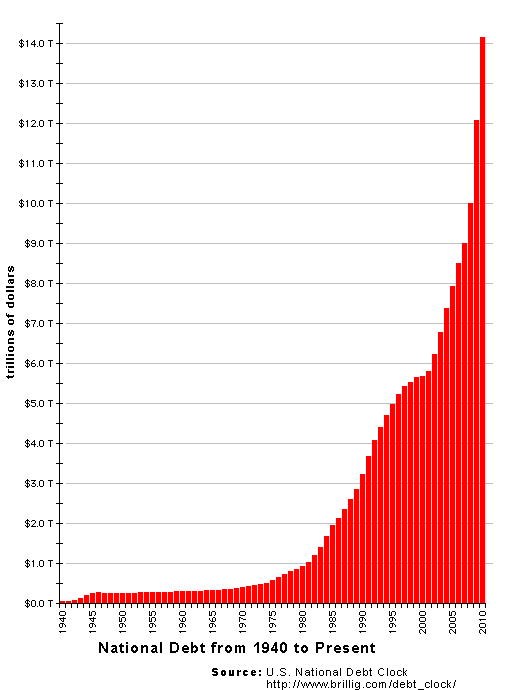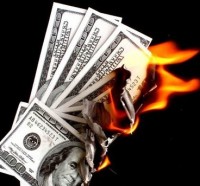 Unless you have been asleep or hiding under a rock for the past five years, you already know that we are experiencing the worst real estate crisis that the U.S. has ever seen. Home prices in the United States have fallen 33 percent from the peak of the housing bubble, which is more than they fell during the Great Depression. Those that decided to buy a house in 2005 or 2006 are really hurting right now. Just think about it. Could you imagine paying off a $400,000 mortgage on a home that is now only worth $250,000? Millions of Americans are now living through that kind of financial hell. Sadly, most analysts expect U.S. home prices to go down even further. Despite the “best efforts” of those running our economy, unemployment is still rampant. The number of middle class jobs continues to decline year after year, but it takes at least a middle class income to buy a decent home. In addition, financial institutions have really tightened up lending standards and have made it much more difficult to get home loans. Back during the wild days of the housing bubble, the family cat could get a zero-down mortgage, but today the pendulum has swung very far in the other direction and now it is really, really tough to get a home loan. Meanwhile, the number of foreclosures and distressed properties continues to soar. So with a ton of homes on the market and not a lot of buyers the power is firmly in the hands of those looking to buy a house.
Unless you have been asleep or hiding under a rock for the past five years, you already know that we are experiencing the worst real estate crisis that the U.S. has ever seen. Home prices in the United States have fallen 33 percent from the peak of the housing bubble, which is more than they fell during the Great Depression. Those that decided to buy a house in 2005 or 2006 are really hurting right now. Just think about it. Could you imagine paying off a $400,000 mortgage on a home that is now only worth $250,000? Millions of Americans are now living through that kind of financial hell. Sadly, most analysts expect U.S. home prices to go down even further. Despite the “best efforts” of those running our economy, unemployment is still rampant. The number of middle class jobs continues to decline year after year, but it takes at least a middle class income to buy a decent home. In addition, financial institutions have really tightened up lending standards and have made it much more difficult to get home loans. Back during the wild days of the housing bubble, the family cat could get a zero-down mortgage, but today the pendulum has swung very far in the other direction and now it is really, really tough to get a home loan. Meanwhile, the number of foreclosures and distressed properties continues to soar. So with a ton of homes on the market and not a lot of buyers the power is firmly in the hands of those looking to buy a house.
So will home prices continue to go down? Possibly. But they won’t go down forever. At some point the inflation that is already affecting many other segments of the economy will affect home prices as well. That doesn’t mean that it will be middle class American families that will be buying up all the homes. An increasing percentage of homes are being purchased by investors or by foreigners. There are a lot of really beautiful homes in the United States, and wealthy people from all over the globe love to buy a house in America.
But because of the factors mentioned above, it is quite possible that U.S. home prices could go down another 10 or 20 percent, especially if the economy gets worse.
So what is the right time to buy a house?
Nobody really knows for sure.
Mortgage rates are near record lows right now and there are some great deals to be had in many areas of the country. But that does not mean that you won’t be able to get the same home for even less 6 months or a year from now.
In any event, this truly has been a really trying time for the U.S. housing market. Hordes of builders, construction workers, contractors, real estate agents and mortgage professionals have been put out of work by this downturn. The housing industry is one of the core pillars of the economy, and so a recovery in home sales is desperately needed.
The following are 20 really wacky statistics about the U.S. real estate crisis….
#1 According to Zillow, 28.4 percent of all single-family homes with a mortgage in the United States are now underwater.
#2 Zillow has also announced that the average price of a home in the U.S. is about 8 percent lower than it was a year ago and that it continues to fall about 1 percent a month.
#3 U.S. home prices have now fallen a whopping 33% from where they were at during the peak of the housing bubble.
#4 During the first quarter of 2011, home values declined at the fastest rate since late 2008.
#5 According to Zillow, more than 55 percent of all single-family homes with a mortgage in Atlanta have negative equity and more than 68 percent of all single-family homes with a mortgage in Phoenix have negative equity.
#6 U.S. home values have fallen an astounding 6.3 trillion dollars since the housing crisis first began.
#7 In February, U.S. housing starts experienced their largest decline in 27 years.
#8 New home sales in the United States are now down 80% from the peak in July 2005.
#9 Historically, the percentage of residential mortgages in foreclosure in the United States has tended to hover between 1 and 1.5 percent. Today, it is up around 4.5 percent.
#10 According to RealtyTrac, foreclosure filings in the United States are projected to increase by another 20 percent in 2011.
#11 It is estimated that 25% of all mortgages in Miami-Dade County are “in serious distress and headed for either foreclosure or short sale“.
#12 Two years ago, the average U.S. homeowner that was being foreclosed upon had not made a mortgage payment in 11 months. Today, the average U.S. homeowner that is being foreclosed upon has not made a mortgage payment in 17 months.
#13 Sales of foreclosed homes now represent an all-time record 23.7% of the market.
#14 4.5 million home loans are now either in some stage of foreclosure or are at least 90 days delinquent.
#15 According to the Mortgage Bankers Association, at least 8 million Americans are currently at least one month behind on their mortgage payments.
#16 In September 2008, 33 percent of Americans knew someone who had been foreclosed upon or who was facing the threat of foreclosure. Today that number has risen to 48 percent.
#17 During the first quarter of 2011, less new homes were sold in the U.S. than in any three month period ever recorded.
#18 According to a recent census report, 13% of all homes in the United States are currently sitting empty.
#19 In 1996, 89 percent of Americans believed that it was better to own a home than to rent one. Today that number has fallen to 63 percent.
#20 According to Zillow, the United States has been in a “housing recession” for 57 straight months without an end in sight.
So should we be confident that the folks in charge are doing everything that they can to turn all of this around?
Sadly, the truth is that our “authorities” really do not know what they are doing. The following is what Fed Chairman Ben Bernanke had to say about the housing market back in 2006….
“Housing markets are cooling a bit. Our expectation is that the decline in activity or the slowing in activity will be moderate, that house prices will probably continue to rise.”
Since that time U.S. housing prices have experienced their biggest decline ever.
At some point widespread inflation is going to reverse the trend we are experiencing right now, but that doesn’t mean that most American families will be able to afford to buy homes when that happens.
As I have written about previously, the middle class in America is shrinking. The number of Americans on food stamps has increased by 18 million over the past four years and today 47 million Americans (a new all-time record) are living in poverty.
Millions of our jobs are being shipped overseas, the cost of living keeps going up and an increasing percentage of American families are losing faith in the economy.
More Americans than ever are talking about “the coming economic collapse” as if it is a foregone conclusion. Our federal government is swamped with debt, our state and local governments are swamped with debt and our economic infrastructure is being ripped to shreds by globalization.
So sadly, no, there are not a whole lot of reasons to be optimistic at this point about a major economic turnaround.
The U.S. economy is going down the toilet and the coming collapse is going to be incredibly painful for all of us.
Hopefully when that collapse comes you will have somewhere warm and safe to call home. If not, hopefully someone will have compassion on you. In any event, we all need to buckle up because it is going to be a wild ride.









